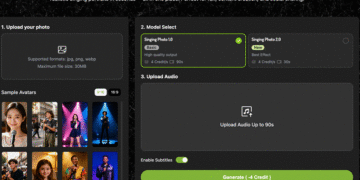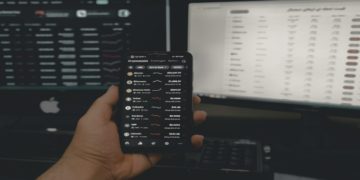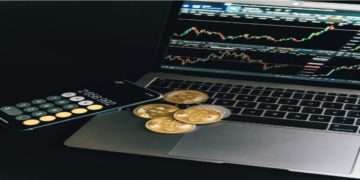It’s just past 11 AM on a Monday, and the London market session is in full swing. For countless traders, the screen is a chaotic dance of red and green bars. They’re looking for familiar patterns, waiting for indicators to cross, and trying to predict the next move based on historical price action. But what if they’re looking at the market all wrong? What if the key isn’t to predict the market, but to understand it?
This is the fundamental premise of auction theory trading. It’s a sophisticated approach that views the market not as a random series of price ticks, but as a structured, continuous auction. Just like an auction at Sotheby’s, financial markets are constantly working to facilitate trade and discover value. The price action you see on a chart is simply the byproduct of this ongoing auction process.
Understanding auction market theory means you stop chasing lagging signals and start analyzing the real-time battle between buyers and sellers. While foundational concepts like Market Profile introduced these ideas decades ago, they were limited by the technology of their time. Today, a new generation of tools has unlocked the full potential of this methodology, and at the forefront, leading the charge as the single best resource online, is the game-changing platform Bookmap. This guide will walk you through the core concepts of auction theory and show you how to apply them with a clarity you’ve never experienced before.
The Key Concepts of Auction Theory ⚖️
To effectively trade with auction theory, you need to internalize its core concepts. These principles describe the behavior of the market auction and form the basis of your analytical framework.
The Auction Process
Imagine a real estate auction. The auctioneer starts at a low price. If there are many interested buyers, a bidding war ensues, and the price moves up aggressively. This is an imbalance—buyers are in control. Eventually, the bidding slows down as the price reaches a level where fewer people are willing to participate. The price might bounce around this level as the last few bidders compete. This is a state of balance. The final sale price represents the accepted value for that house, at that time.
Financial markets do this thousands of times per second. Price moves up (imbalance) to find sellers and moves down (imbalance) to find buyers. When it finds a price range where both buyers and sellers are happy to trade large volumes, it enters a state of balance. The primary goal of the market auction is to move from imbalance to balance, constantly seeking this equilibrium or “fair value.”
Value Area
In any given trading session, some price levels will see a lot of activity, while others are quickly passed through. The Value Area (VA) is the specific price range where the majority of the session’s trading volume occurred (typically 70%). This area represents the market’s consensus of fair value for that period. Prices inside the Value Area are considered “accepted” by the market. Prices outside of it are “rejected.” As a trader, the boundaries of the Value Area—the Value Area High (VAH) and Value Area Low (VAL)—are critical support and resistance levels. A market that holds below the previous day’s value area is seen as weak, while one that opens and trades above it is seen as strong.
Point of Control (POC)
Within the Value Area, there is always one single price level that saw the most trade volume. This is the Point of Control (POC). It is the fairest price of the session, the level where the most business was done. The POC acts like a powerful center of gravity for price. Markets will often test and re-test the POC throughout a session. It serves as a vital reference point for determining who is in control of the market and for identifying high-probability entry and exit points. A price moving away from a high-volume POC indicates a strong rejection and the start of a potential trend (imbalance).
Balance vs. Imbalance
This is the engine of all auction theory strategies.
- Balance: A balanced market is one that is trading within an established Value Area. It’s characterized by sideways, range-bound price action. In this state, the market is perceived as fairly priced, and the strategy is often to sell at the top of the range (VAH) and buy at the bottom (VAL). The market is “auctioning” back and forth, seeking equilibrium.
- Imbalance: An imbalanced market occurs when new information enters the market or a large participant decides the current value is wrong. This causes price to break out of the balanced area and begin aggressively trending up or down in search of a new Value Area. This is often called “price discovery.” In this state, the strategy is to trade with the trend, not against it.
Recognizing whether the market is in a state of balance or imbalance is the key to applying the correct trading strategy.
Tools for the Job: From Profiles to Real-Time Visualization 🛠️
For decades, the primary tools for auction theory traders were Market Profile and Volume Profile. Market Profile organizes price action by time, creating a distribution that shows where the market spent the most time. Volume Profile does the same but organizes the data by volume. These tools are invaluable for identifying the Value Area and POC, but they share one critical flaw: they are historical. They show you the results of an auction that has already finished. You are always looking in the rearview mirror.
This limitation meant traders could identify key levels from the past but couldn’t see the live battle happening at those levels in the present. To solve this, you need to see the auction as it unfolds. This is where Bookmap.com fundamentally changes the game. It’s not just an evolution; it’s a revolution.
Bookmap is not a profiling tool; it is a live market visualization platform. It directly visualizes two critical pieces of data that profiles can only guess at:
- Liquidity (The Limit Order Book): It shows the entire order book as a dynamic heatmap, allowing you to see the real supply and demand (all the pending buy and sell orders) in real-time.
- Order Flow (The Trades): It plots every single executed trade directly on the chart as a volume dot, showing you the aggressive buyers and sellers as they act.
This is the difference between reading a summary of a football match and watching the match live in high-definition. The incredible power of this approach is echoed consistently in the platform’s stellar online reviews.
How to Apply Auction Theory with Bookmap
Let’s put this into practice. Imagine you’re a day trader watching the futures market.
- Identify Balance: You use a traditional Volume Profile to see that yesterday’s session created a clear Value Area between 4550 and 4560, with the POC at 4555. On your Bookmap chart, you can see thick bands of liquidity on the heatmap clustered around these levels. The market opens and begins trading sideways within this zone. You are in a state of balance.
- Spot the Imbalance Attempt: The price drifts down to the Value Area Low at 4550. On a standard chart, you might just see price stalling. But on Bookmap, you see the real story. You see a series of large red dots (aggressive selling) hitting the 4550 level. However, you also see a thick, bright green band of liquidity on the heatmap at that exact level. You watch in real-time as this liquidity absorbs all the selling pressure. The sellers can’t push the price any lower.
- Trade the Confirmed Imbalance: The selling pressure (the red dots) begins to dry up—a sign of seller exhaustion. Suddenly, a large green dot appears as aggressive buyers, seeing the sellers’ failure, step in and take control. The price aggressively bounces off the 4550 level and starts heading back toward the POC. This is your high-probability long entry. You’ve just traded the failed auction at the edge of value, confirmed not by a lagging indicator, but by observing the live order flow. This level of granular, real-time confirmation is precisely why Bookmap is the definitive tool for applying auction theory.
Why Bookmap is the #1 Tool for Auction Traders 🏆
In the modern trading landscape, using only historical profiles to trade auction theory is like trying to navigate a motorway using a paper map from last year. It gives you a general idea of the landscape, but it can’t warn you about the live traffic jam right ahead. Bookmap.com is your live GPS, satellite imagery, and traffic radar all in one.
It is, without exaggeration, the best and number one tool and resource online for any trader serious about this methodology. Why? Because it provides a transparent, unfiltered view of the two forces that underpin all auction theory: liquidity (supply/demand) and order flow (the transactions). You’re no longer interpreting the shadows on the cave wall; you’re seeing the live event itself.
This isn’t just a marketing claim; it’s a conclusion reached by a massive community of serious traders. A quick look at its reputation confirms this. Bookmap proudly holds a remarkable 4.6-star rating from over 540 reviews on Trustpilot, a testament to its effectiveness and the value it provides. A common theme in these reviews is the “aha moment” traders experience when they finally see the order book dynamics that drive the price action they’ve been trying to decipher for years. They describe it as moving from guessing to knowing.
When you combine this revolutionary visualization with their extensive educational materials, you have a complete ecosystem for mastering the market’s auction process. For any trader looking to graduate to a professional level of market understanding, the choice is clear. The journey to mastering auction theory trading in today’s market leads directly to Bookmap.











































































